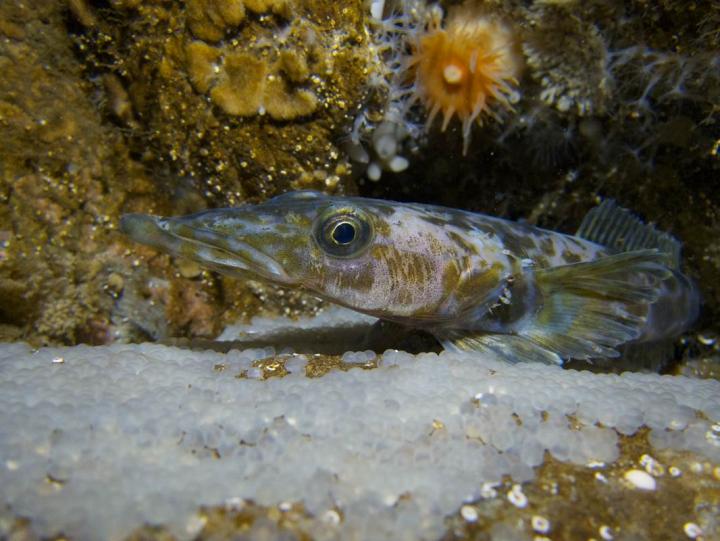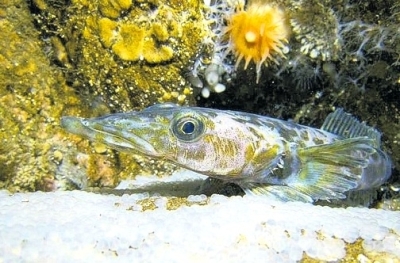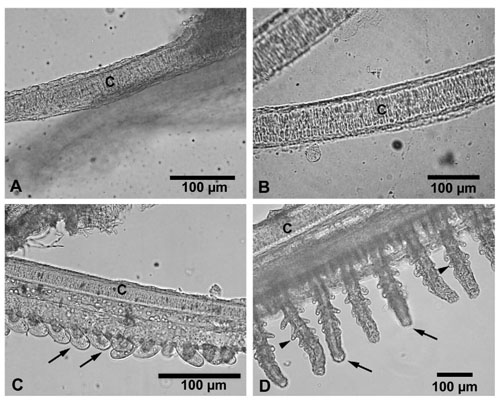
Gymnodraco acuticeps
FAMILY
Bathydraconidae
TAXONOMY
Gymnodraco acuticeps Boulenger, 1902, Cape Adare, North Victoria
Land, Antarctica.
OTHER COMMON NAMES
None known.
PHYSICAL CHARACTERISTICS
Grows to 13.5 in (34 cm) in length. It has an elongated, scaleless
body (length/depth ratio, 9:0) with a long, pointed head.
The coloring is yellowish to olive-brown, with darker blotches
on the sides; it is pale on the ventral surface. The lower jaw
extends well beyond the upper and bears two prominent fangs
that are slanted backwards to prevent the escape of prey. In
common with all members of the dragonfish
FAMILY
, it lacks the
first spinous dorsal fin. This species produces abundant mucus
when it is freshly caught.
DISTRIBUTION
South Shetland, the Antarctic Peninsula, and the eastern Antarctic
continental shelf from the Weddell Sea to the Ross Sea.
HABITAT
Found mainly in shallow inshore waters, to a depth of 162 ft
(50 m), although it has been caught as deep as 1,800 ft (550 m).
It commonly resides in crevices or under rock ledges or anchor
ice.
BEHAVIOR
This is an aggressive fish that rapidly consumes other aquarium
inhabitants.
FEEDING ECOLOGY AND DIET
The diet varies with location. Near the Antarctic Peninsula,
the dragon fish feeds on krill; in McMurdo Sound, fish, amphipods,
fish eggs, and polychaetes are taken.
REPRODUCTIVE BIOLOGY
Spawning occurs in September; 0.12-in (3-mm) eggs are attached
to a stone as a flattened patch of about a thousand and
guarded. In the wild, adults tend egg masses until the larvae
hatch and disperse. Development takes about a year. Freeswimming
larvae, about 0.6 in (15 mm) long, hatch out in early
summer and remain in the zooplankton for about six months.
CONSERVATION STATUS
Not threatened.
SIGNIFICANCE TO HUMANS
This species is proving to be a valuable research subject. Beginning
in 2001 clusters of developing embryos near McMurdo
Station have been harvested for investigation into the ontogeny
of AFGPs.
Photo Gallery of - Naked dragonfish




 Animalia Life
Animalia Life